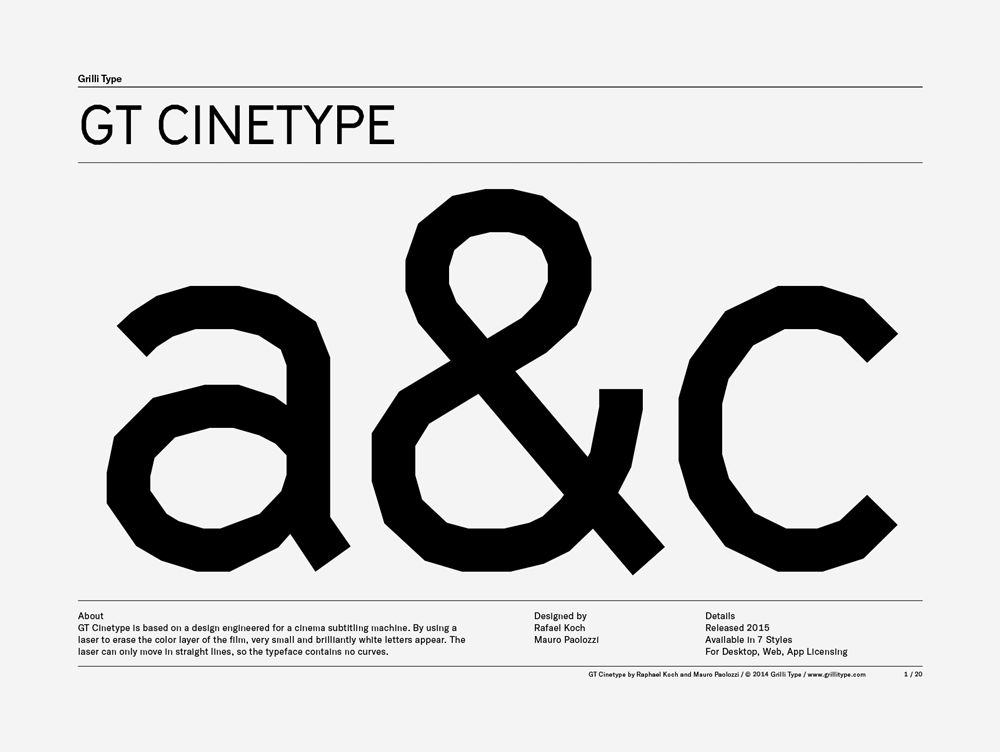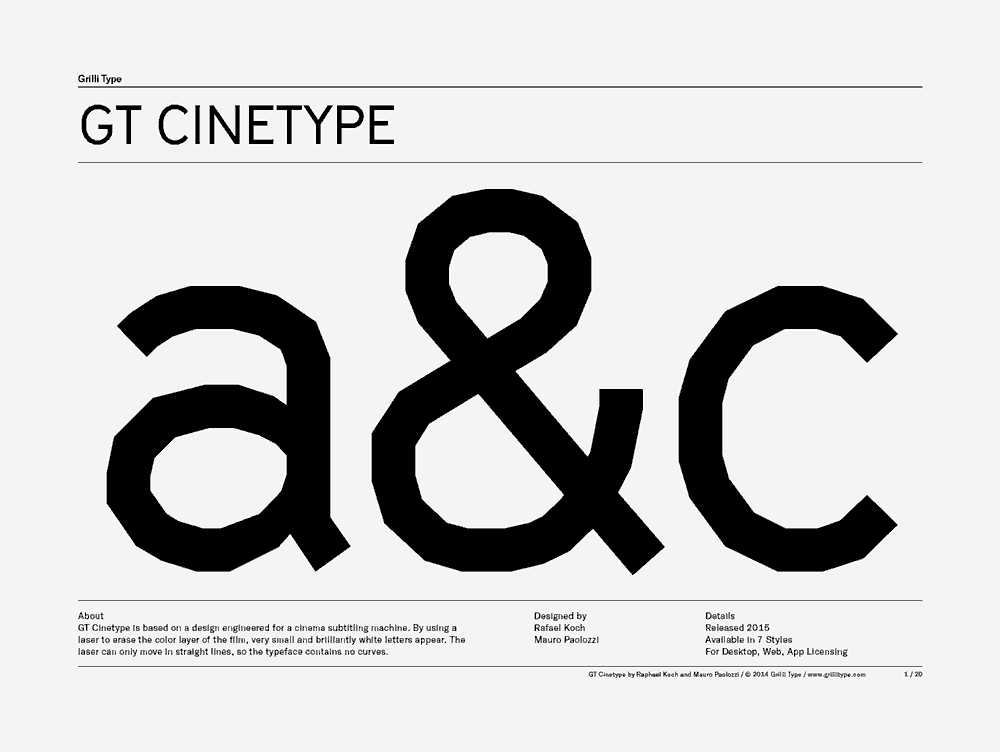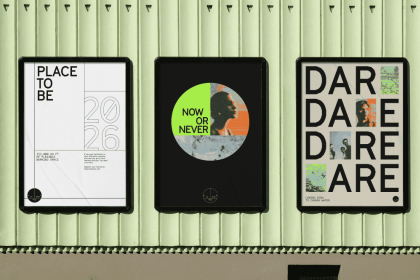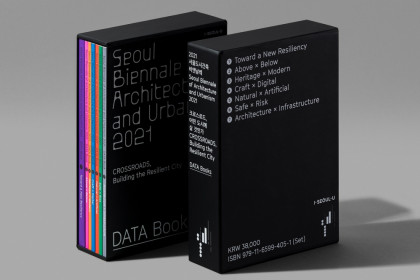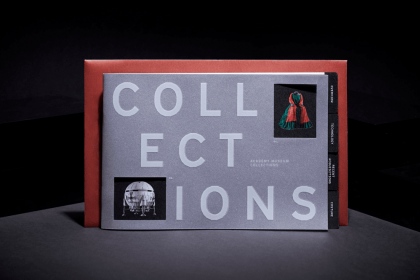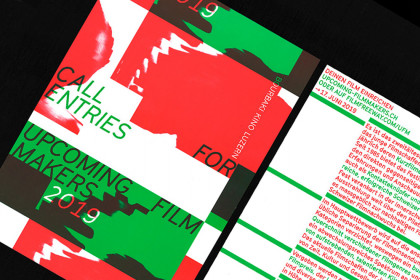GT Cinetype
Family overview
- Light Italic
- Regular Italic
- Bold Italic
- Mono
- LightBasket Case 1982 by Frank Henenlotter with Kevin Van Hentenryck, Terri Susan Smith, Beverly Bonner
- Light Italic2001: A Space Odyssey 1986 by Stanley Kubrick with Keir Dullea, Gary Lockwood, William Sylvester
- RegularC’era una volta il West 1968 by Sergio Leone with Henry Fonda, Charles Bronson, Claudia Cardinale
- Regular ItalicGodzilla 1977 by Ishirô Honda with Raymond Burr, Akihiko Hirata, Momoko Kôchi
- BoldShichinin no samurai 1954 by Akira Kurosawa with Toshirô Mifune, Takashi Shimura, Keiko Tsushima
- Bold ItalicMad Max 2: The Road 1981 by George Miller with Mel Gibson, Bruce Spence, Michael Preston
- MonoDonnie Darko 2001 by Richard Kelly with Jake Gyllenhaal, Jena Malone, Mary McDonnell
- Settings
Typeface information
GT Cinetype is based on a design engineered for a cinema subtitling machine. By using a laser to erase the color layer of the film, very small and brilliantly white letters appear. The laser can only move in straight lines, so the typeface contains no curves.
Typeface features
OpenType features enable smart typography. You can use these features in most Desktop applications, on the web, and in your mobile apps. Each typeface contains different features. Below are the most important features included in GT Cinetype’s fonts:
- CASE
- Case sensitive forms
(ROBOCOP)
- ONUM
- Oldstyle figures
10.03.1985
Typeface Minisite
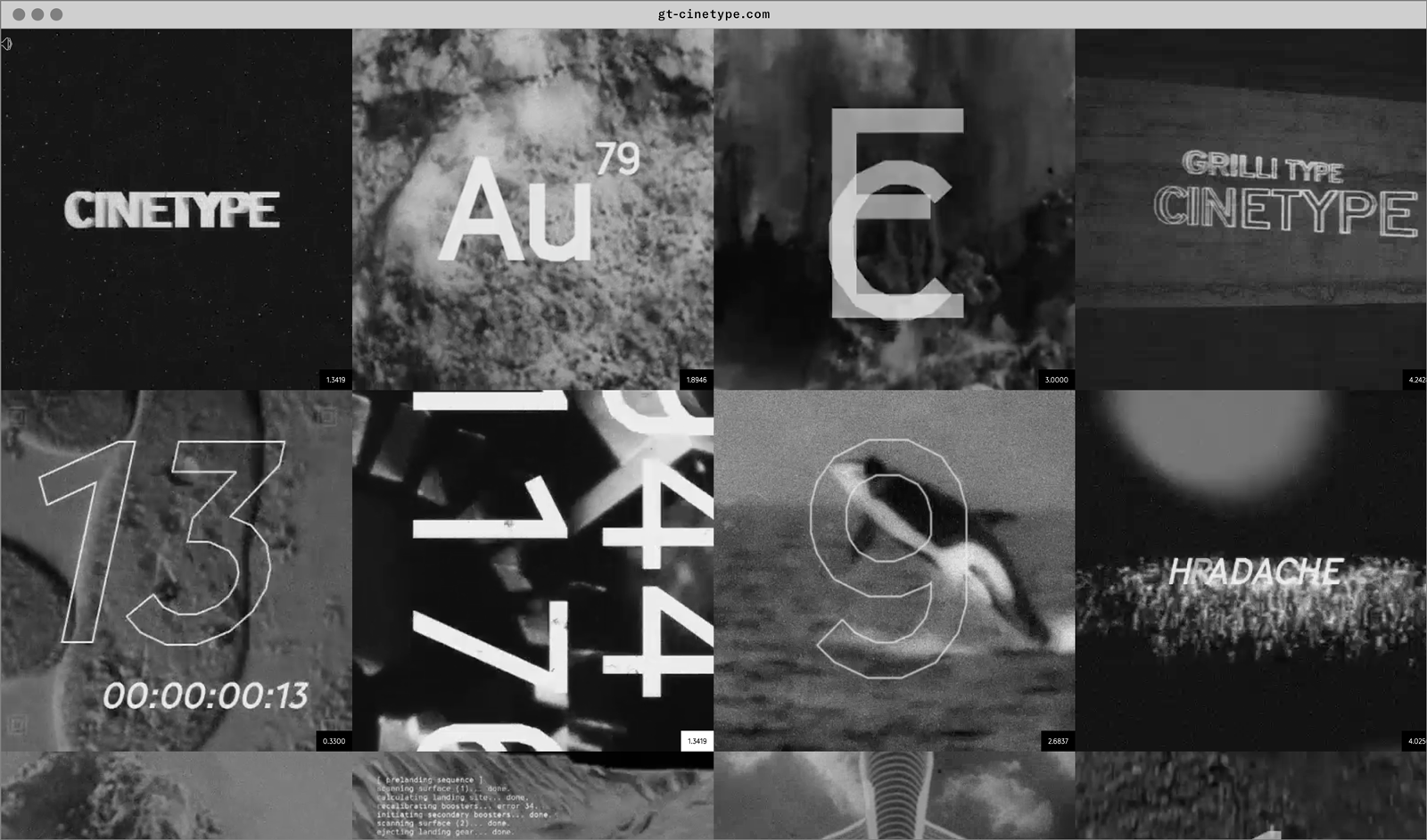
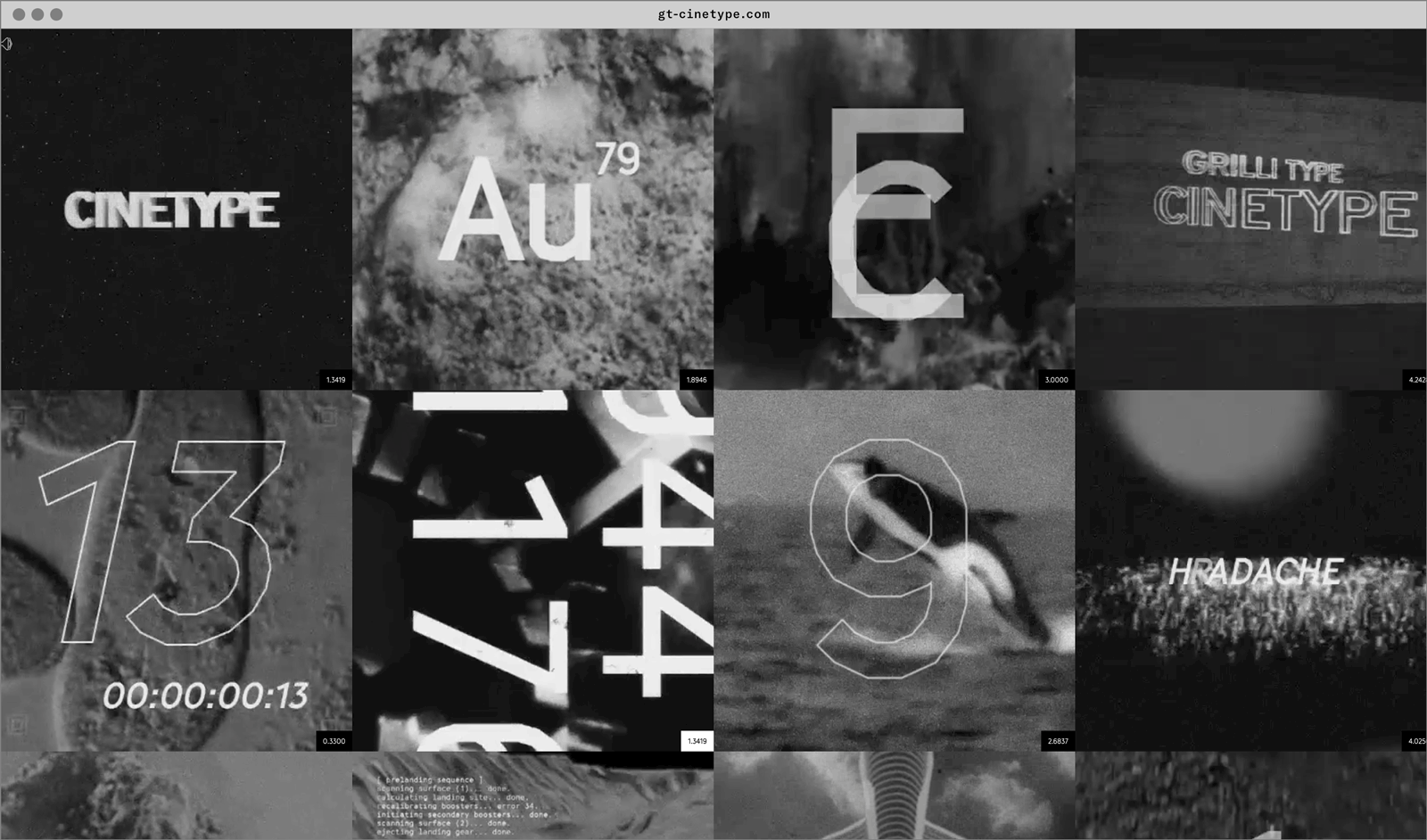
- Visit the GT Cinetype minisite to discover more about the typeface family’s history and design concept.
GT Cinetype in use
